This is our second issue on Pottery in Randolph County, “NC Highway 22, the first “Potter’s Highway”. Renowned potter and historian Robert (Bob) Armfield highlights some of the most distinguished potteries from on and around NC Hwy 22 from Coleridge to New Salem. Before Seagrove and NC705 became famous for the pottery shops from that area, there was NC 22. The history of pottery, clay fields, and earthenware that thrived along this historic highway date as far back and the late 1600’s. Our first issue dealt with the pottery families from Coleridge up to Ramseur. In this issue,
Bob goes into detail about some of Ramseur and Franklinville potteries as well as sites across the Ramseur Brooklyn Bridge. The next issue will examine potteries through Grays Chapel, Red Cross, and up to New Salem.
My former boss Walter Auman, told me that old beer joints made good pottery shops. The building where Seagrove Pottery and Oakland Pottery started was originally beer joints. Later, our shop became the Hilltop Grocery and eventually, a personal dwelling.
When we opened the pottery in November 1977 many people were curious and wanted to tell
me of their connections to the pottery business. Looking back, it seems funny to remember three that
were close to the shop, just down the Old Siler City Road before you get to the creek.
Behind the shop, Mr. and Mrs. Richard Poindexter lived. Mr. Poindexter was a frequent visitor
and fellow craftsman, his medium being wood. The first story that I treasure came from his daughter
Evelyn, who made me aware that her husband was the grandson of potter J. Pascal Marable. We will
look at Marable more closely when we get near Cedar Falls.
Ruth McKinnon became a frequent customer and I found out shortly that she was Mrs. Auman’s
first cousin. Ruth’s father was Clarence Cole. Cole was a mover and shaker in the early art pottery
movement. Cole died young and will be remembered for his accomplishments with transition glazes,
especially chrome red and ferruginous washed salt glaze. He also built the first horizontal pug mill, using
an auger blade and the transmission of his Dodge truck.
My third visitor was Junior Staley. After I began building my groundhog kiln, Junior became
interested in being a brick mason and son of a potter. I had met his father, the Reverend Audy Staley, a
former potter, that Mrs. Auman had found alive during some of her research. Junior gave me one of his
trowels that I greatly value and will use as I now tear down the old kiln to rebuild it.
Closer to Ramseur my attention has been drawn to a potter named W .T. Hutson on whom I still
have limited information. Terry Zug in his book Turners and Burners. gives Hutson’s birth date as circa
1852 with no death date given. His work was extremely well-turned utilitarian stoneware and stamped
W. Hutson/Reed Creek PO NC.
Ramseur has its own Brooklyn Bridge. After crossing the bridge, the road split. Follow the left
towards “The Ridge” and Andrew Jackson (raven’s shop could have been found. Here he made salt
glazed utilitarian stoneware. In the 1970s Mrs. Auman stated that the walls and part of the chimney of
(raven’s groundhog kiln remained standing.
If you had taken the right fork and gone to the end of Brooklyn Ave. turned right, and right again
you would have been in the driveway of Archie and Yvonne Teague. Archie was the son of one of the
most talented potters of the twentieth century, James Goodwin Teague. Archie learned from his father
and uncle and turned pottery for C.C. Cole and later J.B. Cole where Yvonne also worked. Here Nell Cole
Graves would pay him by the hour instead of by the piece for some very difficult shapes.
In 1967 Archie, Yvonne, and Yvonne’s father, Homer Hancock opened the H&T Pottery on Mack
Rd. in Asheboro. The shop remained open until 1972 when economic conditions contributed to the
closing of a number of smaller pottery shops. Archie and Yvonne made many eye-pleasing shapes and
developed a palette of unleaded glazes with the help of Baxter Mackenzie.
For the next twenty-five years, Archie spent his working hours at the Asheboro Fire Department, but his mind never stopped thinking about what he was going to do after he retired. I met Archie in the 1980s through a mutual friend, Roger Hicks, who Archie worked with at the fire department. Mrs. Auman had told me so much about Teague that he was already my “hero” before we ever met.
One Saturday when I was having a great deal of difficulty with the arch of my kiln Roger told Archie I was stuck and he appeared and helped me in laying out the arch. He did this with a large piece of cardboard in the parking lot of the shop. He then educated me on how to build the arch. I began building the arch and expected to see Teague come to check on my progress and see if I was doing things correctly. I felt abandoned. Later, I found out from Roger that Archie was checking my progress daily. Ever being the teacher, he made sure I did everything correctly and only correcting when necessary.
As retirement neared Archie again made one of his appearances and said he would like to begin making pottery again. I asked if he would consider making pottery for our shop. He said he would think about it. The next day he had off he came by the shop and made fifteen pitchers. We agreed on a price of a dollar apiece. The next day off, Archie said he wanted to see what he “could do.” In an hour he made sixty candleholders. That added up to sixty dollars an hour. 1 wondered if I had just gone broke? Things sold quickly and I should never have worried. A little later Yvonne began making pottery for the shop also. When Archie came to the shop, I had become complacent with my work. He realized this and challenged me to improve. He would make a new shape. I would make at it, and he would say push that shape as far into space as you can before it falls, remember you can have a piece of great beauty or it could fall. What would you be happiest with?
Good things began to come to an end and the Teague’s first built a wood-fired kiln and shop on their pottery here in Ramseur. We would often hear Archie’s truck before we saw it on Saturday mornings. He would pull in the parking lot of the shop and would sell his ware to before they could get into the shop. Good-naturedly, he and Betty Jo would get into a shouting match with each other.
Archie had land on Hwy 705 where his grandfather had made pottery in a section called Longleaf. Here he built his shop and a wood-fired kiln. Here also, he helped develop the careers of many upcoming potters. Sadly, Archie and Yvonne left us too early. We have our cherished memories of them and the pottery that helps to brighten our world.
Another extension of a well-known pottery family in Ramseur could be found on Highway 64. Juanita Luther was the granddaughter of Seagrove area potter Henry Chrisco who made utilitarian ware until the late 1930s. Juanita proudly displayed a picture of Henry in front of his shop looking at a firing of churns, crocks, and jugs. After his death, Chrisco’s shop was given to the Smithsonian Institution for display there.
Juanita, her husband Horace, and son Chris (we adopted Chris as our “fourth son”) all learned to turn pottery. Juanita tended to gravitate to smaller items such as miniature tea sets. Horace was a good turner but his lifelong interest in mechanics helped him design a rheostatic powered pottery wheel. When Horace died, I needed to pass the sad news to fellow potter Faye Baker in Seattle, Washington. She was saddened by his death but said she remembered Horace daily, when she worked on the wheel, he made for her.
Our “son Chris” spent many hours learning to firewood kilns, turning, and trying to perfect the whole pottery-making process. Today he owns Chris Luther Pottery on the Jugtown Rd. near Seagrove. Chris has developed his own style of pottery with traditional influences like his grandfather and Archie Teague.
Now, close to fifty years ago Betty Jo and I met a leather craftsman at a show. We found out he was from Ramseur and his name was Tim Cox. Tim showed an interest in pottery. Over the years he has developed that interest and makes pottery in his basement. When you enter Zack White Leather, take a look at his pottery on the front wall.
To end this month’s journey, we travel across Highway 64 and travel toward Franklinville where would have found the pottery of another Craven with a most distinguished name. Emory John Vandervere Craven (1826-1910} was a contemporary of John Anderson (raven’s sons that we have previously looked at. His salt. – glazed ware was extremely well turned and well glazed. His ware was stamped, E JV Craven. During the War Between the States, Craven served in the Confederate Navy.
Next Month, Franklinville and beyond.
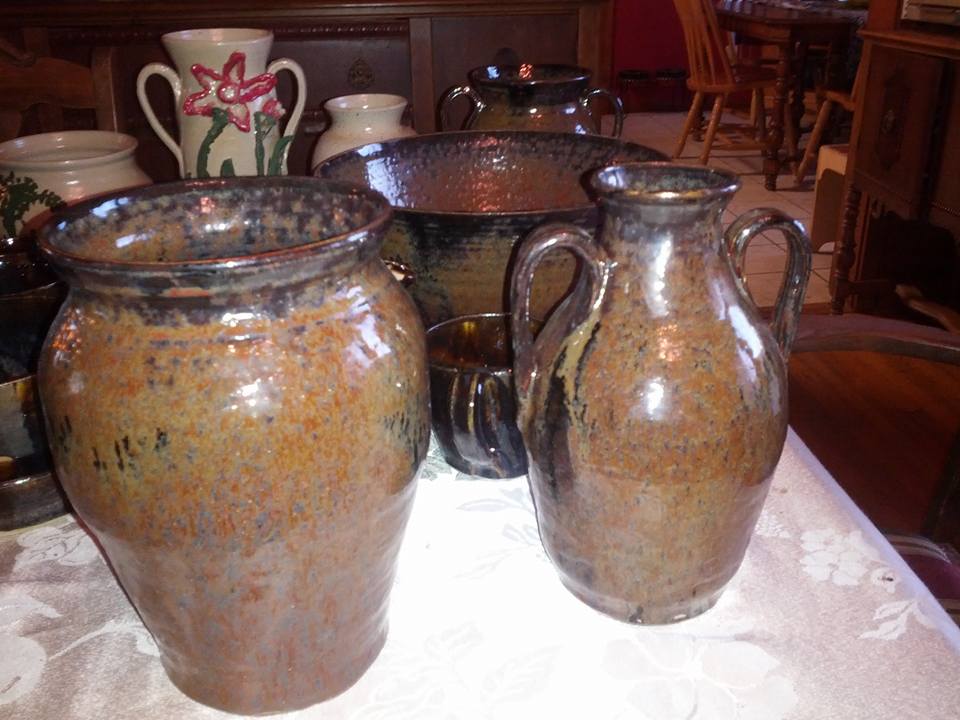
Pottery by W.T. Cox that can be found at Zack White Leather Co. 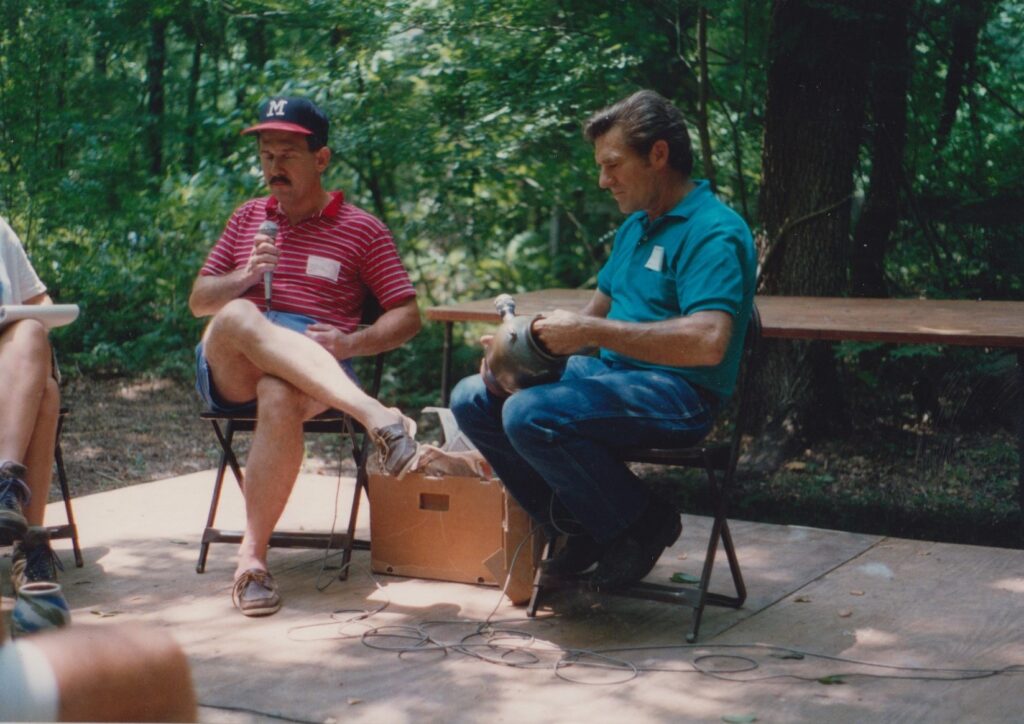
Archie Teague and myself at the Festival for the Eno. We were paid to do a question-and-answer
session with a moderator. I think Betty Jo and Yvonne were the only ones that listened.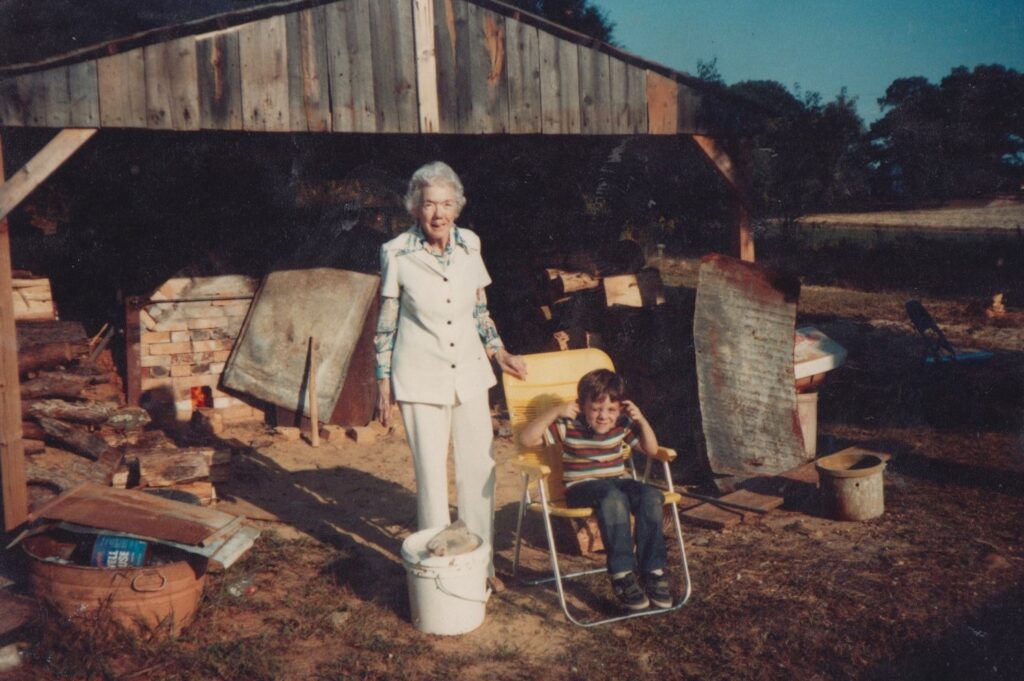
This was the first firing of our groundhog kiln. My help consisted of my mother, Sarah Armfield,
and our son John, who loves to pose for the camera.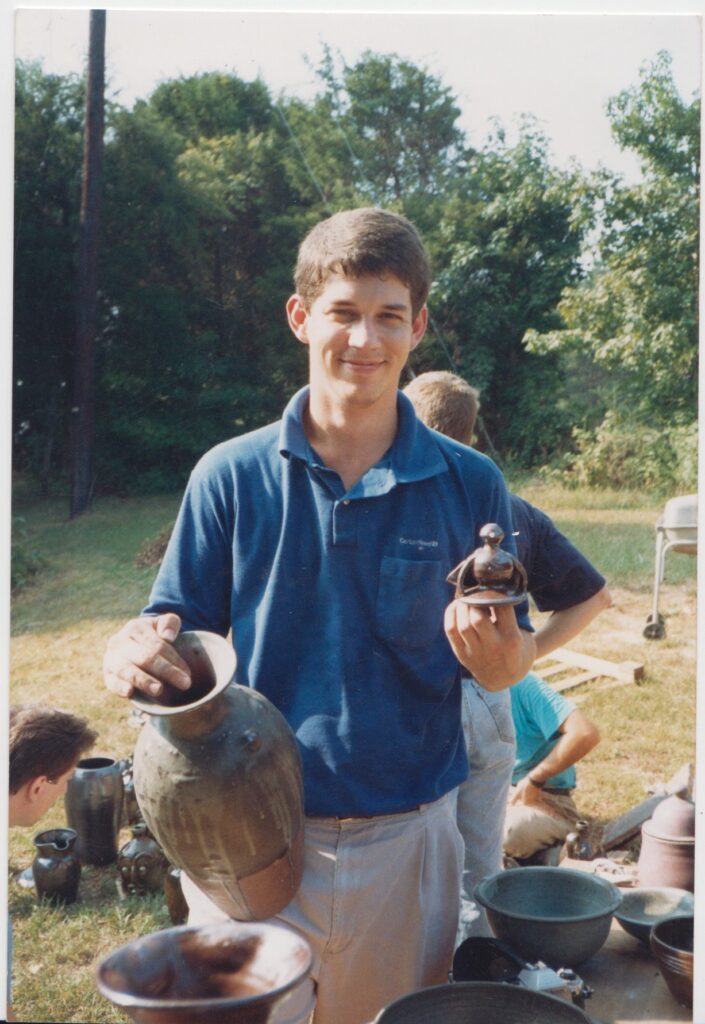
Chris, you owe me big time for using this picture. 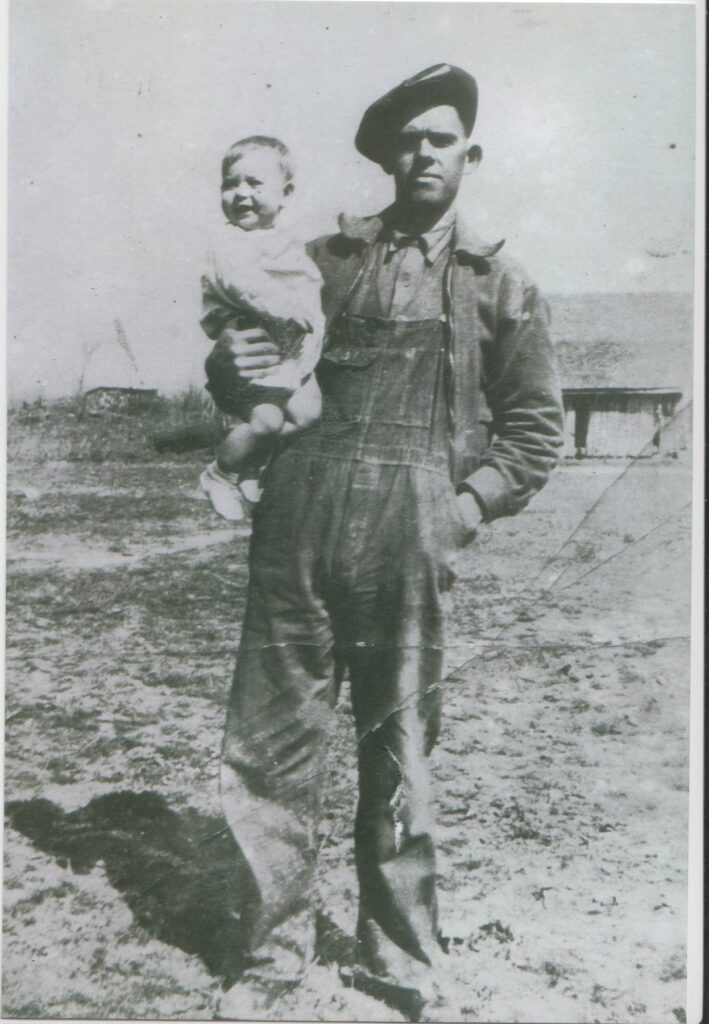
Clarence Cole holding his daughter, Francis Cole Luck in front of the Ruffin Cole homeplace. 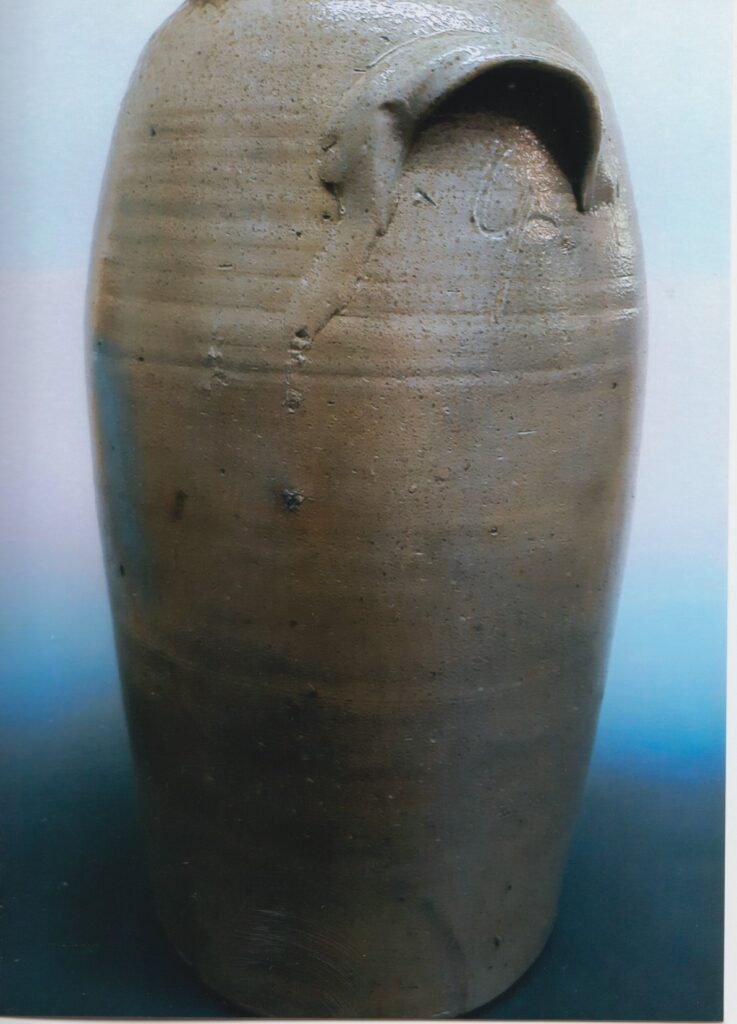
4-gallon churn by Henry Chrisco which I found in a local antique shop. 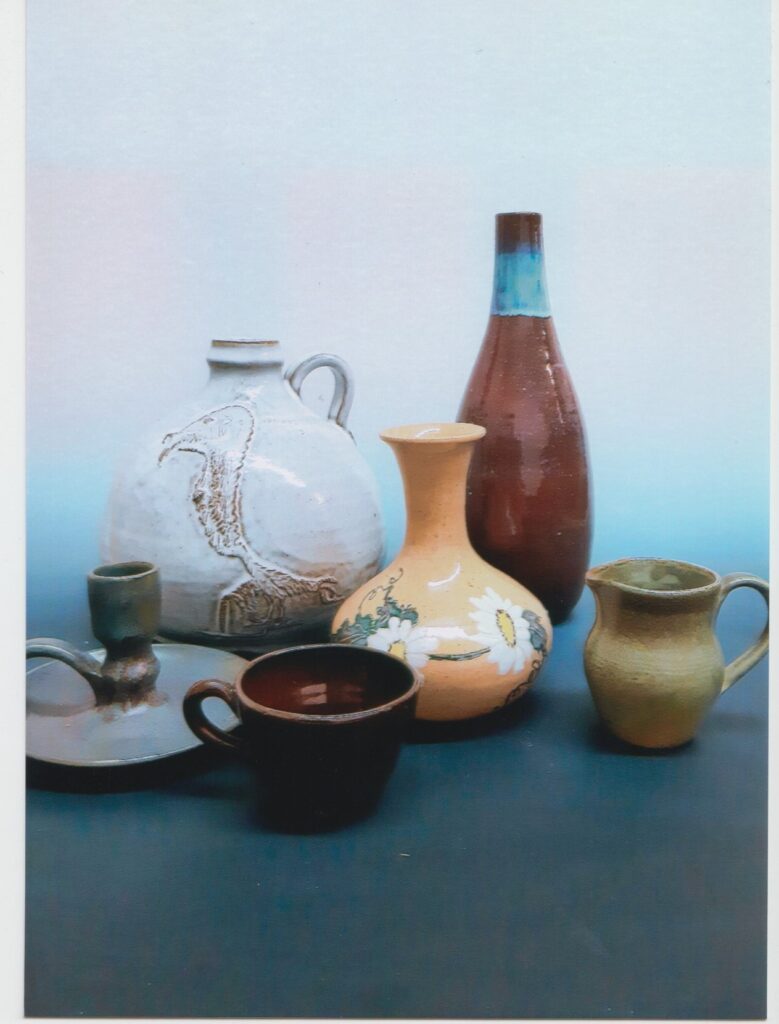
Assorted pieces of Archie and Yvonne league’s. The candleholder was one of the sixty that I
thought might shut down the shop. They sold so fast I had to buy this example back.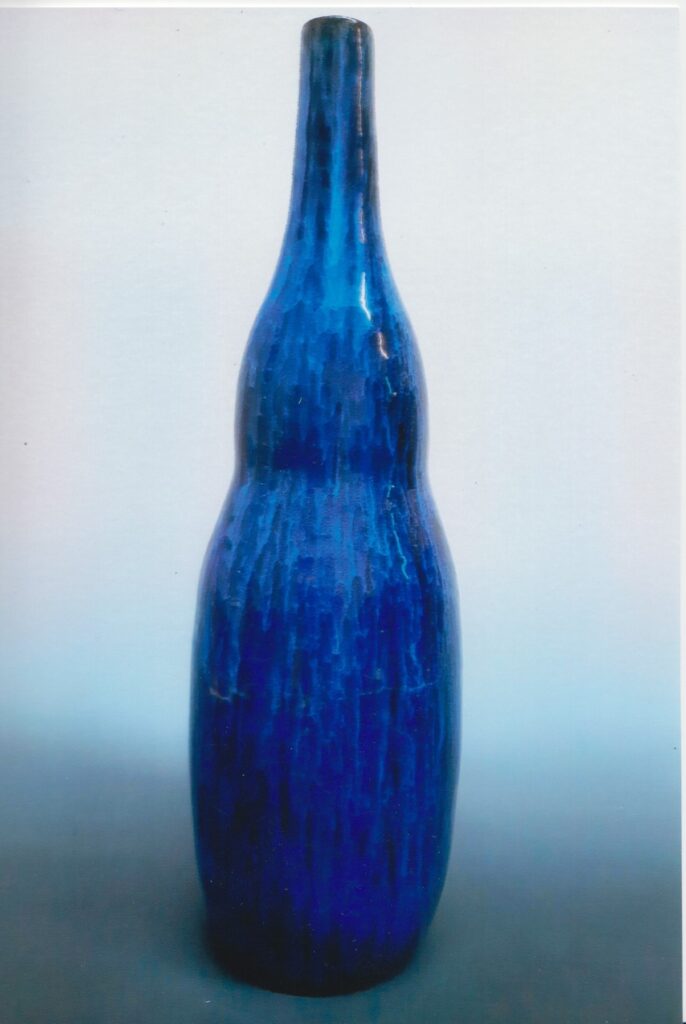
J.B. Cole pottery bottle. This is a piece that Archie was paid for by the hour instead of the piece. 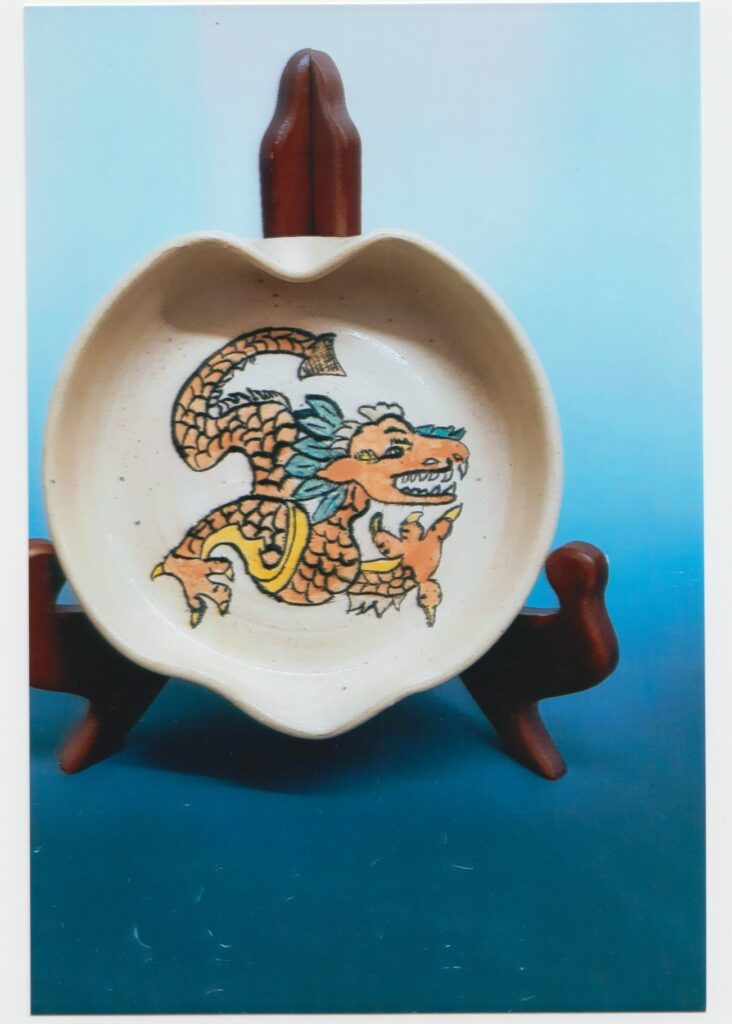
Juanita Luther and I collaborated on this plate.
